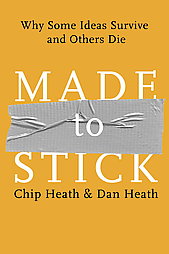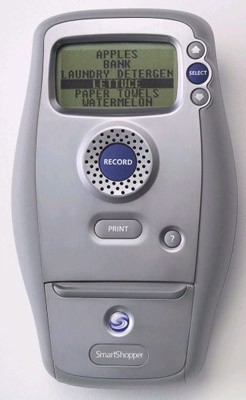Today is an auspicious day, and not just because it’s the first ever One Positive Day. This is the eighth anniversary of US Web officially changing its name to MarchFirst.com. I recall realizing for the first time that the business world was running out of good dot-com brand names, and fast.
Back then, US Web was the fastest growing web development franchise in the country. They were hot stuff — super-heated, in fact, by the plentiful VC of the Dot Com Boom. When they chose the new name MarchFirst, they gave marketers such as myself a clear look inside their rebranding process.
To me the new name suggested a frustration – and ultimate resignation — over a growing domain name scarcity. Eight years hence, this scarcity has has only gotten worse.
I can understand why they had opted not to choose a non sequitur, like Amazon.com, or something flippant and undignified, like Yahoo!
They chose instead what I like to call the cocktail party story variety of brand name. It’s an opportunity for employees to tell something about their company, because saying who they work for at a cocktail party forces the question, “What does that name mean?”
Sadly, the answer in this case is hardly memorably, or instructive of the brand: “That’s the day we were renamed MarchFirst.”
When I started my first business in a new market, I chose a similar cocktail party story name. I chose Second Monday Direct Marketing. People would ask, and I would explain that in a direct mailing, the second Monday after the first day of response was often the best day of response.
It wasn’t a scintillating story, but it was novel. It also associated my business with direct mail and results. What’s more, it helped me say the brand name a few times during the course of the story, which was all that it took for people to remember it. The name was easy to say over the telephone, and spell. It made a good domain name.
If I had to name a direct marketing company today, however, I’d be out of luck, and not just because the factoid this name was based on is no longer true. SecondMonday.com went into circulation long ago, and has been scooped up by someone else. Just like nearly every other good domain name you can imagine.
More recently, I had luck with another cocktail party domain name, DigitalSolid.com. (If you want to hear the story you’ll have to invite me to your party.)
 This week my team is embarking upon yet another “namestorming” exercise, for yet another client whose brand name will be inextricably tied to their domain name. Once again, the process won’t be pretty. It will require lists of hundreds of word combinations. There will be disappointing WHOIS searches –brief high hopes dashed by a message like the one on the right. When I try my luck with domain name ideas, I feel like the poor schmo in the convenience store, scratching off another lottery ticket that yields — zilch.
This week my team is embarking upon yet another “namestorming” exercise, for yet another client whose brand name will be inextricably tied to their domain name. Once again, the process won’t be pretty. It will require lists of hundreds of word combinations. There will be disappointing WHOIS searches –brief high hopes dashed by a message like the one on the right. When I try my luck with domain name ideas, I feel like the poor schmo in the convenience store, scratching off another lottery ticket that yields — zilch.
If there is any good news in this, it’s that the soul of good art (and branding is an art!) is constraint.
The boundaries of the rectangular picture frame actually free the painter, and the limitation of the 88 piano keys inspires the songwriter. Struggling as we have been with the ever-shrinking canvas of available domain names, I was inspired this morning to hear on NPR a story about Theodor Geisel, better known as Dr. Seuss.
He took the challenge of writing a book to replace the unbelievably boring Dick and Jane series of reading material. Seuss was on a noble crusade to teach six- and seven-year-olds how to read without prematurely sapping their will to live.
Accepting the challenge, Seuss faced a huge limitation. He was handed a list of only 200 words that children this age were likely to be able to understand. According Philip Nel, the author of The Annotated Cat, and quoted in the NPR story:
“[Seuss’] favorite story about the creation of The Cat in the Hat is that it was born out of his frustration with the word list.
“He said he would come up with an idea, but then he would have no way to express that idea. So he said…: ‘I read the list three times and almost went out of my head. I said I’ll read it once more and if I can find two words that rhyme, that will be my book. I found cat and hat and I said the title will be The Cat in the Hat.'”
In the end, Nel says, Seuss used exactly 236 words to write The Cat in the Hat, words that young readers can understand.
The assignment took nearly two years to complete, but the result is a book that is still read and loved – which is inspiring until you realize that his pace works out to less than three words a week. Yikes!
Our domain namestorming must produce a half dozen viable name options in as many business days. It’s an especially tall order because, I swear, there simply aren’t 200 good domain names remaining in all of Whooville.


 Voice recognition seems to be a theme in my life lately. I just finished setting up
Voice recognition seems to be a theme in my life lately. I just finished setting up